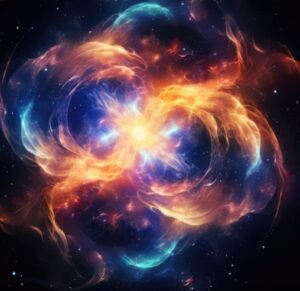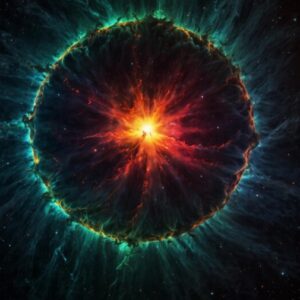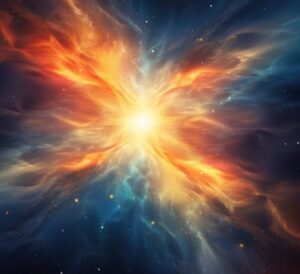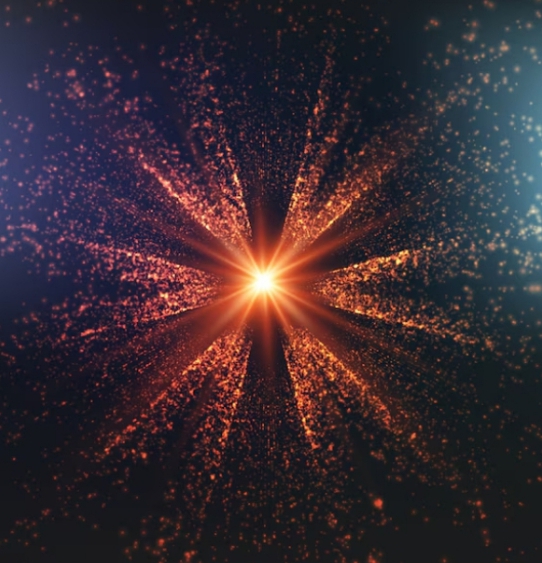
Big bang theory
The Big Bang Theory revolutionized our understanding of the universe’s origin. It proposes that the universe began from a singularity. This singularity expanded rapidly, leading to the formation of matter and galaxies. Scientists support the Big Bang Theory through observational evidence, such as cosmic microwave background radiation. The theory also explains the observed redshift of distant galaxies. Over time, this expansion has led to the current state of the universe. Researchers use advanced technology to study the universe’s early moments. it remains a cornerstone of modern cosmology. It provides a framework for understanding the universe’s large-scale structure. By studying this theory, scientists gain insights into the universe’s history. The Big Bang Theory continues to inspire research and exploration in the field of astrophysics.
The Scientific Big Bang Theory: Unraveling the Mysteries of Our Universe
The Scientific Big Bang Theory, a cornerstone of modern cosmology, seeks to explain the origin and evolution of the universe. This theory suggests that the universe began as a singular, infinitely dense point approximately 13.8 billion years ago.
Understanding the Big Bang Theory is crucial for grasping the vastness of our universe. According to this theory, the universe started from a state of extreme temperature and density.As it expanded, it cooled down, allowing matter to form and coalesce into galaxies, stars, and other celestial bodies. This process laid the groundwork for the formation of the universe as we know it.
The Big Bang Theory has been supported by a wealth of observational evidence. For instance, the discovery of cosmic microwave background radiation in 1965 provided strong confirmation of the theory. This radiation is considered the afterglow of the initial explosion, permeating the entire universe.
Visit webs
 In popular culture, the Big Bang Theory has transcended scientific circles and entered the realm of mainstream entertainment. The television show *The Big Bang Theory* brought the concept of the big bang into everyday conversation. The show, created by Chuck Lorre and Bill Prady, premiered in 2007 and became a cultural phenomenon. It features a group of scientists whose lives are depicted in a humorous and relatable manner. The *Big Bang Theory* cast includes actors like Johnny Galecki, Jim Parsons, and Kaley Cuoco. Their portrayal of scientists and their personal dynamics has intrigued audiences and popularized the scientific theory.
In popular culture, the Big Bang Theory has transcended scientific circles and entered the realm of mainstream entertainment. The television show *The Big Bang Theory* brought the concept of the big bang into everyday conversation. The show, created by Chuck Lorre and Bill Prady, premiered in 2007 and became a cultural phenomenon. It features a group of scientists whose lives are depicted in a humorous and relatable manner. The *Big Bang Theory* cast includes actors like Johnny Galecki, Jim Parsons, and Kaley Cuoco. Their portrayal of scientists and their personal dynamics has intrigued audiences and popularized the scientific theory.
The series is not just a source of entertainment but also a platform for discussing scientific concepts. Although it does not always portray science accurately, it has sparked interest and curiosity about topics like the Big Bang Theory among viewers. The show’s influence extends beyond entertainment, creating a bridge between complex scientific ideas and the general public.
One aspect of the Big Bang Theory is its ability to unify various observations into a coherent model. For example, the redshift of galaxies and the abundance of light elements are both explained by this theory. The redshift refers to the stretching of light waves as galaxies move away from us, which supports the concept of an expanding universe. The abundance of light elements, such as hydrogen and helium, matches predictions made by the Big Bang model.
 Despite its success, the Big Bang Theory is not without its questions and challenges. Scientists continue to investigate the conditions of the universe’s earliest moments, including the nature of the singularity and the exact mechanism of the expansion. Some alternative theories and models have been proposed to address these questions, but the Big Bang Theory remains the most widely accepted explanation.
Despite its success, the Big Bang Theory is not without its questions and challenges. Scientists continue to investigate the conditions of the universe’s earliest moments, including the nature of the singularity and the exact mechanism of the expansion. Some alternative theories and models have been proposed to address these questions, but the Big Bang Theory remains the most widely accepted explanation.
The theory also opens up discussions about the ultimate fate of the universe and if the universe continues to expand indefinitely, it could lead to a scenario known as the “Big Freeze,” where stars eventually burn out and galaxies drift apart. Alternatively, some theories suggest that the universe could eventually stop expanding and begin contracting, leading to a “Big Crunch.” These hypotheses illustrate the theory’s role in not only explaining the past but also speculating about the future.
In educational settings, the Big Bang Theory is a fundamental topic in physics and astronomy curricula. Students learn about the evidence supporting the theory and the mathematical models that describe cosmic expansion. Educational programs and documentaries often use the Big Bang Theory as a way to explain complex concepts in a more accessible manner. By doing so, they help cultivate a greater appreciation for the universe and its origination.
 The impact of the Big Bang Theory extends beyond science and education into philosophical and existential realms.It prompts questions about the nature of existence, the role of humans in the cosmos, and our understanding of time and space. So these questions reflect the profound implications of the Big Bang Theory on our worldview and our place in the universe.
The impact of the Big Bang Theory extends beyond science and education into philosophical and existential realms.It prompts questions about the nature of existence, the role of humans in the cosmos, and our understanding of time and space. So these questions reflect the profound implications of the Big Bang Theory on our worldview and our place in the universe.

2 thoughts on “Big bang theory”